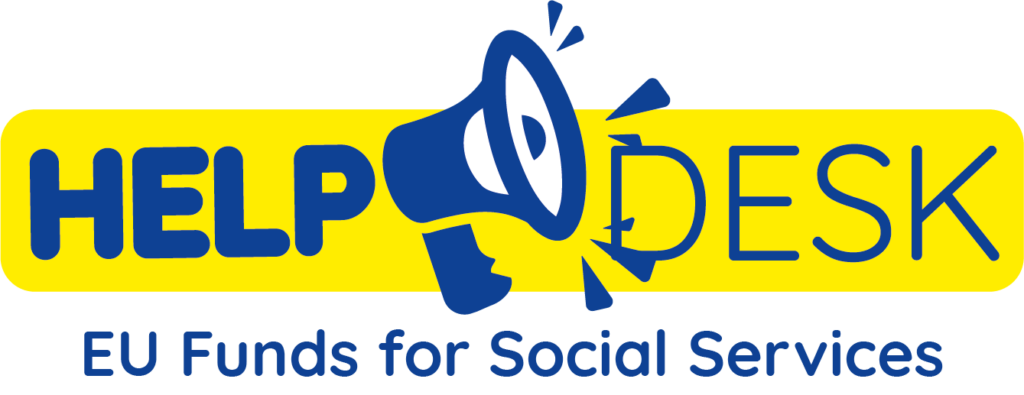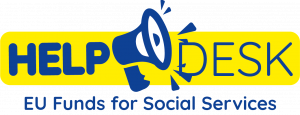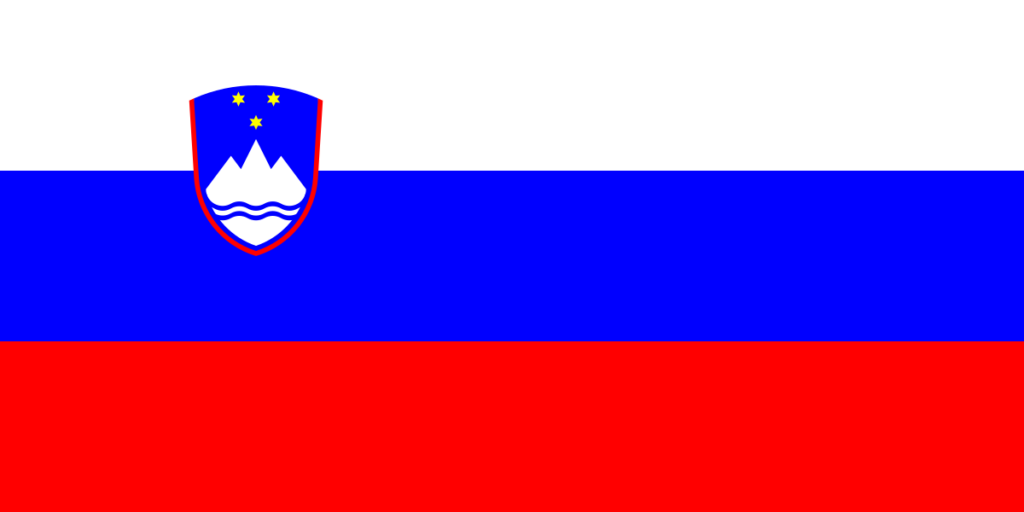Partnership agreement EC – Slovenia 2021 – 2027
| Policy objectives, JTF-specific objectives, or technical assistance | ERDF | Cohesion Fund allocation at national level | JTF | ESF+ | EMFAF allocation at national level | Ukupno | |||||||
|---|---|---|---|---|---|---|---|---|---|---|---|---|---|
| Allocation at national level | Category of region | Allocation by category of region | Allocation at national level | Article 3 JTF resources | Article 4 JTF resourcesAllocation at national level | Category of region | Allocation by category of region | ||||||
| Policy Objective 1 | More developed | 241,306,488 | More developed | 727,173,813 | |||||||||
| Less developed | 485,867,325 | Less developed | |||||||||||
| Policy Objective 2 | More developed | 111,714,305 | 295,533,041 | More developed | 13,678,134 | 806,712,567 | |||||||
| Less developed | 385,787,087 | Less developed | |||||||||||
| Policy Objective 3 | More developed | 405,142,679 | More developed | 511,031,159 | |||||||||
| Less developed | 105,888,480 | Less developed | |||||||||||
| Policy Objective 4 | More developed | More developed | 153,307,283 | 769,326,617 | |||||||||
| Less developed | 129,891,813 | Less developed | 486,197,521 | ||||||||||
| Policy Objective 5 | More developed | 17,627,973 | More developed | 8,897,000 | 94,127,785 | ||||||||
| Less developed | 67,602,812 | Less developed | |||||||||||
| JTF-specific objective | 248,773,600 | 108,931,414 | 139,842,186 | 248,773,600 | |||||||||
| Technical assistance pursuant to Article 36(5) CPR | More developed | 12,972,706 | 17,516,893 | 9,950,943 | More developed | 6,244,291 | 1,354,507 | 108,871,553 | |||||
| Less developed | 41,126,313 | 4,357,256 | 5,593,687 | Less developed | 19,615,900 | ||||||||
| Ukupno | More developed | 383,621,472 | 718,192,613 | 258,724,543 | More developed | 159,551,574 | 23,929,641 | 3,265,997,094 | |||||
| Less developed | 1,216,163,830 | Less developed | 505,813,421 | ||||||||||
| Ukupno | 1,599,785,302 | 718,192,613 | 258,724,543 | 665,364,995 | 23,929,641 | 3,265,997,094 | |||||||
| Sotsiaalsema Eesti alt planeeritavad meetmed *erieesmärk (k) ja (m): kavandatavad sotsiaalteenused | |||||||
| Nimetus | Eri-ees-märk | Meede | Sekkumised | Fond | RA | RÜ | EL toetuse eelarve |
| Sotsiaalsem Eesti | a | Kõrge tööhõive taseme saavutamine ja hoidmine | Tööturu struktuursete probleemide lahendamine, tööhõive suurendamine ja erinevate tööturu riskirühmade tööturul osalemise toetamine | ESF | SOM | RTK | 52 444 320 |
| a | Meeste ja naiste võrdse majandusliku sõltumatuse toetamine ning soolise tasakaalu suurendamine kõigil otsustus- ja juhtimistasanditel | Soolise võrdõiguslikkuse edendamine tööturul | ESF | SOM | RTK | 2 485 950 | |
| d | Kõrge tööhõive taseme saavutamine ja hoidmine | Töötervishoiu ja –ohutuse teenuste kujundamine Töökeskkonna ja töötingimustega tegelevate organisatsioonide, sh sotsiaalpartnerite ja erialaorganisatsioonide võimekuse tõstmine Püsiva töövõimekao ennetamine ja ajutise töövõimetusega inimeste tööhõives püsimise toetamine | ESF | SOM | RTK | 31 991 245 | |
| d | Terviseriskide ja riskikäitumise vähendamine ning kogukondade ja paikkondade võimestamine tervise edendamisel | Haiguste ennetusmeetmete, nõustamis-, rehabilitatsiooni- ja tugiteenuste kättesaadavuse parandamine inimeste konkurentsivõime tõstmiseks tööturul ja tööturule naasmiseks | ESF | SOM | RTK | 5 085 755 | |
| d | Hüvitiste maksmine, skeemide arendamine ja inimeste piiriülest liikumist arvestava sotskindlustussüsteemi kujundamine | Aktiivsena vananemise toetamine töötajate ja tööandjate teadlikkuse suurendamise kaudu | ESF | SOM | RTK | 973 000 | |
| e | Õpetajate järelkasv ja areng, õpikäsitus ja -keskkonnad | Teaduspõhine õppekavade ja õppevara arendamine ning rakendamine ja õppekvaliteedi hindamine, personaalsed õpiteed ja õpianalüütika. Haridus- ja noortevaldkonna töötajate esma- ja täiendusõpe ning järelkasv. | ESF | HTM | RTK | 39 469 458 | |
| e | Hariduse, ühiskonna ja tööturu seosed | Õppurite õpivalikute suunamine kutse- ja kõrghariduses, e Tehnoloogiaprogramm (aka Inseneriakadeemia). Tööturu vajadustele vastava kutse- ja kõrghariduse arendamine (PRÕM+). IT hariduse ja digioskuste arendamine. Kõrghariduse kvaliteet, rahvusvahelistumine ja doktorikoolid. | ESF | HTM | RTK | 87 708 324 | |
| e | Teadussüsteemi järjepideva toimimise kindlustamine | Teaduskommunikatsioon ja teaduse populariseerimine | ESF | HTM | RTK | 4 903 335 | |
| f | Noortevaldkonna arendamine | Noorsootöö meetmed noorte tööturule sisenemise toetamiseks ja NEET-staatuses noortele tugimeetmete pakkumiseks. | ESF | HTM | RTK | 8 846 597 | |
| f | Õpetajate järelkasv ja areng, õpikäsitus ja -keskkonnad | Hariduse tugiteenused | ESF | HTM | RTK | 20 642 061 | |
| g | Õpivõimalused ja hariduse korraldus | Täiskasvanute mitteformaalses õppes osalemise toetamine ning arendustegevused (sh koolitusasutuste võimekuse suurendamine, kvaliteediarendus, täiskasvanute õpiteede paindlikumaks muutmine, elukestva õppe populariseerimine). Täiskasvanute tasemeõppes osalemise toetamine. | ESF | HTM | RTK | 68 445 860 | |
| g | Hariduse, ühiskonna ja tööturu seosed | Kutsesüsteemi reform | ESF | HTM | RTK | 13 800 000 | |
| h | Õpetajate järelkasv ja areng, õpikäsitus ja -keskkonnad | Eesti keele õpe ja keeleõppe arendamine | ESF | HTM | RTK | 21 000 000 | |
| h | Noortevaldkonna arendamine | Teenused riskinoortele: Laste ja noorte kodanikuühiskonda kaasamine | ESF | HTM | RTK | 2 607 397 | |
| h | Keelevaldkonna arendamine | Eesti keele õpe ja keeleõppe arendamine | ESF | HTM | RTK | 11 190 000 | |
| h | Kriminaalpoliitika kujundamine ja kuritegevuse vähendamine | Noorte retsidiivsuse vähendamisele suunatud erinevad tegevused. Sihtrühm: noored, spetsialistid, võimalikud teenuse osutajad. | ESF | JUM | RTK | 6 658 729 | |
| h | Lõimumist, sh kohanemist toetav Eesti | Kohanemisprogrammi „Settle in Estonia“ pakkumine; Andmevahetuslahenduse (sh infoplatvormi) edasiarendus ja rakendamine; Eri keele- ja kultuuritaustaga inimeste ning tagasipöördujate tööturul konkurentsivõimet toetavad tegevused; Eesti keele õpet toetavad tegevused ning kodanikuõpe; Avalikkuse teavitamine rände-, lõimumis-, sh kohanemisteemadel; Kohalike omavalitsuste toetamine lõimumise, sealhulgas kohanemise teenuste pakkumisel; kogukondade vaheliste kontaktide edendamine. | ESF | KUM | RTK | 35 368 926 | |
| h | Ennetav ja turvaline elukeskkond | Riskikäitumisega noorte toetamine, kohaliku tasandi võrgustikutööl põhinevate koostöömudelite ja ennetustöö edendamine: • Spetsialistide koostöömudel keskmise ja kõrge riskikäitumisega noorte toetamiseks • Koolitused ennetusalase kompetentsi arendamiseks ning riskikäitumise ennetamiseks • Alkoholi ja teiste uimastitega seotud kahjude ja riskikäitumise vähendamise kompetentsi loomine • Kohaliku tasandi võrgustikutöö edendamine turvalisuse suurendamiseks | ESF | SIM | RTK | 2 195 788 | |
| h | Kodanikuühiskonna mõju suurendamine ja arengu toetamine | Laste ja noorte kodanikuühiskonda kaasamine 1. Süsteemse kogukonnapõhise laste ja noorte kaasamismudeli arendamine (kodanikuühiskonna järelkasvu tagamine) 2. Laste ja noortega tegelevate vabaühenduste kaasamis- ja osalemisoskuste tõstmine (võimaluste loomine vabaühenduste arendamiseks, vabaühenduste arendamine ja tugevdamine rõhuasetusega laste ja noortega tegelevatel vabaühendustel) | ESF | SIM | RTK | 1 401 098 | |
| h | Karistuste täideviimise korraldamine | Kinnipeetavate konkurentsivõime suurendamine läbi nende parema lõimimise, sh eesti keele oskuse parandamise. Sihtrühm: kinnipeetavad, võimalikud teenuse osutajad | ESF | JUM | RTK | 1 770 000 | |
| h | Lastele ja peredele suunatud teenused on kvaliteetsed ja vastavad perede vajadustele | Laste ja perede toetamine Laste riskikäitumise ennetamine | ESF | SOM | RTK | 30 852 834 | |
| k | Iseseisvat toimetulekut toetavate ja kvaliteetsete sotsiaalteenuste ning hooldusvõimaluste tagamine | Kogukonna ja kohalike omavalitsuste võimestamine; teenuste kättesaadavuse parandamine; uuenduslike ja integreeritud teenuste arendamine; hoolduskoormuse leevendamine; sotsiaalvaldkonna tööjõu kvalifikatsiooni tõstmine ja jätkusuutlikkuse tagamine. Kvaliteetsed ja kättesaadavad sotsiaalteenused; hoolduskoormuse leevendamine; sotsiaalvaldkonna tööjõu kvalifikatsiooni tõstmine ja jätkusuutlikkuse tagamine; erinevate valdkondade integratsioon ja uuenduslike lahenduste kasutusele võtt. Kvaliteetsed ja kättesaadavad sotsiaalteenused sh kaitstud töökoha teenus, isikukesksed teenused. | ESF | SOM | RTK | 38 660 000 | |
| k | Kogukonna juhitud kohalik areng – CLLD | Pikaajalise hoolduse teenuste kättesaadavuse ja kvaliteedi parandamine ning hoolduskoormuse leevendamine Inimväärikuse tagamine sh vaesuse vähendamine ja sotsiaalse kaasatuse suurendamine | ESF | SOM | RTK | 5 000 000 | |
| k | Lastele ja peredele suunatud teenused on kvaliteetsed ja vastavad perede vajadustele | Lastele- ja peredele suunatud, pikaajalist hooldust (sh puuetega laste) vähendavate sotsiaalteenuste arendamine ja pakkumine | ESF | SOM | RTK | 4 500 000 | |
| m | Sotsiaalkindlustuse programm | Toidu ja/või esmatarbekaupade pakkumine (nt voucherite skeemi alusel) | ESF | SOM | RTK | 15 612 147 | |
Toetusmeede | Rakendus-asutus | Rakendusüksus | Taotleja | Rahaline maht | Toetusmäär | Vooru avanemise prognoos |
Kohalike tegevusrühmade strateegiate elluviimine | Sotsiaal-ministeerium | RTK | Taotleja on kohalik tegevusrühm (MTÜ), kes on nimetatud kohaliku tegevusrühma strateegias ESF+-st rahastatavate tegevuste rakendajana | 5 miljonit eurot | 100% | eelduslikult III kvartal |
Policy Objective 4: A more social and inclusive Europe implementing the European Pillar of Social Rights
To achieve the objectives of the Akcijski plan Europskog stupa socijalnih prava and Slovenia’s 2030 national targets, the following action points will be taken:
- Implementing measures primarily on reducing the long-term unemployment rate and with a view to prolonging working life. Using ESF+ resources, the focus is on finding measures on putting in place an inclusive and responsive labour market.
- Active employment policy measures will be targeted at mitigating the impact of crises and reducing structural disparities. They will also focus on the functioning and integration of labour market institutions and the modernisation of their services.
- Closing the gap on the labour market by focusing on raising the competencies and skills of jobseekers and employees and supporting access to employment.
- ESF+ resources will be used to support the acquisition of knowledge and skills that are key to an individual’s success in society, adapted to the future of work and to global changes.
- Promoting adult education and greater participation in lifelong learning, paying particular attention to vulnerable groups such as older people, including the over-65s, the low-skilled and less qualified, etc.
- Organizational changes will be invested in and access to inclusive and high-quality education will be improved. In line with the needs, funding will be allocated in both cohesion regions, with a slightly higher intensity in the ESCR.
- With the help of ESF+ resources measures will be adopted to improve social inclusion and improve the employment opportunities of vulnerable groups, especially the long-term unemployed.
- Supporting social inclusion and social activation programs to make it easier for those who are inactive or who have been unemployed for a prolonged period.
- Measures to develop and provide social care services and community-based services. This will require the continuation of the deinstitutionalisation process and the consolidation of long-term care services.
- Integrating provision, protection, and promotion, and integrate treatment and addiction prevention programmes.
- Improving the health of the population and reduce health inequalities, providing organisational and substantive upgrades to primary care by integrating prevention activities, facilitating access to emergency medical assistance.
- All actions aimed at investing in social and health care infrastructure under any policy objective will be planned in accordance with needs assessments and will be based on a mapping of services and infrastructures.
Policy Objective 5: A Europe closer to citizens by fostering sustainable and integrated development of urban, rural and coastal areas and local initiatives.
Slovenia’s objective is to continue to promote endogenous potentials to reduce development disparities. ERDF resources will be allocated to building an inclusive society and to the further comprehensive socio-economic development of urban and rural areas, with particular attention to be paid to reducing the gap between socio-economically disadvantaged people and areas.
2. Distribution/breakdown of funds in national/regional programs. Coordination between national and regional programs.
In relation to the implementation of the Partnership Agreement in Slovenia, there will be coordination, demarcation, and complementarity between the ERDF, ESF+, CF, JTF and EMFAF, as well as coordination between national programmes:
- ECP 2021–2027 programme (source: ERDF, ESF+, CF, JTF);
- Programme to Eliminate Material Deprivation in Slovenia 2021–2027 (source: ESF+)
- Maritime and Fisheries and Aquaculture Programme (source: EMFAF)
This will be based on a centralised approach provided by the Government Office for Development and European Cohesion Policy (SVRK). The SVRK is the managing authority of the ECP 2021–2027 programme, which will be financed by the Structural Funds and the Cohesion Fund with the aim of achieving the Objective for Growth and Jobs. The SVRK is also the managing authority for three European Territorial Cooperation (ETC) programmes (SI-AT, SI-HU, SI-HR), the national authority for 11 ETC programmes and the national coordinator of all 13 ETC programmes in which Slovenia participates — four cross-border (SI-AT, SI-HU, SI-HR and IT-SI), five transnational (Alps, Central Europe, Danube, IPA ADRION, Euro-MED) and four inter-regional (Interreg Europe, Interact, ESPON, URBACT).
3. Thematic concentration
| Member State complies with thematic concentration requirement | 31.59% social inclusion Programmed under specific objectives (h)–(l) of Article 4 ESF+ Regulation | Planned ESF+ programmes.
1 ECP programme 2021–2027 |
4.42% support to the most deprived
Programmed under specific objective (m) and in duly justified cases (l) of Article 4 ESF+ Regulation | Planned ESF+ programmes.
1 ECP programme 2021–2027
2 Programme to Eliminate Material Deprivation in Slovenia 2021–2027 (specific objective m). | |
… % support to youth employment Programmed under specific objectives (a), (f) and (l) of Article 4 ESF+ Regulation.
Not applicable to Slovenia. | Planned ESF+ programmes.
1 ECP programme 2021–2027 | |
…% support to tackling child poverty. Programmed under specific objectives (f), (h)–(l) of Article 4 ESF+ Regulation.
Not applicable to Slovenia. | Planned ESF+ programmes.
1 ECP programme 2021–2027 | |
1.8% capacity building of social partners and NGOs
Programmed under all specific objectives except (m) of Article 4 ESF+ Regulation. | Planned ESF+ programmes.1 ECP programme 2021–2027 |
4. Preliminary financial allocation from each fund covered by the Partnership Agreement, by policy objective, JTF-specific objective and technical assistance, at national and where appropriate regional level
Table 2
5. Existing and future initiatives aimed at facilitating access to EU funds
For the implementation of EU cohesion policy 2021–2027, the area of governance quality will be addressed in more detail under the specific ‘Strengthening Good Governance and Administrative Capacity for Cohesion Policy 2021–2027’ roadmap. As a parallel document to the Partnership Agreement, the roadmap arises from the Commission’s practical ‘Roadmaps for Administrative Capacity Building’ toolbox, which is based on the lessons learned from the pilot action on maximum administrative capacity building. In future, technical assistance resources will, where relevant, be engaged in the form of a flat rate and will focus primarily on the education and training of entities performing management and control tasks, entities, and other actors to which the performance and control bodies have delegated tasks, and other entities involved in the implementation of European cohesion policy with a view to effective and efficient implementation, monitoring, and management. Technical assistance funds will also be used to ensure adequate administrative capacity in both cohesion regions and among other entities so that they are better able to absorb funds at regional and local level, and to provide external expertise (area-specific experts for better project preparation and implementation).
Planned investments.
Labour market measures:
- Programmes to keep in the labour market those groups whose employment or self-employment is threatened or temporary, to reduce and prevent precarious work and to prevent the transition back to unemployment for target groups facing atypical forms of work or precarious work.
- Measures to strengthen labour market institutions and services or to modernise their services to address target groups in the labour market more effectively,
- Development, establishment, and operation of a national tool for short, medium, and long-term competency forecasting – PNK,
- Measures to improve health and safety at work, raise awareness of the importance of intergenerational cooperation and tackle intergenerational stereotypes,
- Measures to prolong working life and promote intergenerational knowledge transfer.
Actions in the field of education and training:
- Career centres for young people, including career guidance for learners, o Strengthening the key competences of learners, such as digital competences, language competences, creativity, media literacy, critical thinking, entrepreneurship, creativity, healthy self-esteem, prevention of violence and addiction, cultural awareness and expression, and promotion of talents.
- Strengthening education and labour market cooperation in vocational and technical schools, higher education Pupil/student – knowledge institutions – business/non-business (PKP) networking programmes,
- Establishment of a supportive environment in tertiary education,
- Strengthening the competences of professionals and managers in education and training,
- Measures to promote lifelong learning.
- Provision of ICT equipment and infrastructure conditions
- Scholarships.
- Measures in the field of socio-economic inclusion of disadvantaged groups, promoting their active inclusion in society and increasing their employability and poverty prevention, including housing and social services.
6. Useful resources
- Commission adopts Partnership Agreement with Slovenia : Commission adopts Partnership Agreement with Slovenia | GOV.SI
- Partnership agreement 2021- 2027: Partnership Agreement with Slovenia – 2021-2027 (europa.eu)
- EU Cohesion Policy: €3.26 billion for Slovenia’s economic competitiveness, digital transition, and climate goals: EU Cohesion Policy: €3.26 billion for Slovenia (europa.eu)
SADRŽAJ
- Policy objectives relevant to social services
- Distribution/breakdown of funds in national/regional programs.
- Tematska koncentracija
- Preliminary financial allocation from each fund covered by the Partnership Agreement
- Existing and future initiatives aimed at facilitating access to EU funds
- Korisni resursi
Sufinanciran od Europske unije. Izraženi stavovi i mišljenja su međutim samo autora i ne odražavaju nužno stavove Europske unije. Za njih se ne mogu smatrati odgovornima ni Europska unija ni tijelo koje dodjeljuje potporu.




